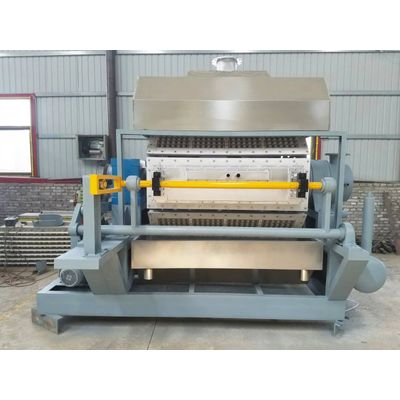

- Home
- Companies
- Beston Group Co., Ltd.
- Articles
- Common Maintenance Challenges in Egg ...

Common Maintenance Challenges in Egg Tray Molding Machine Lines
Maintaining continuous operation in an egg tray molding machine line requires vigilant oversight and technical precision. Despite the robust nature of pulp molding systems, several recurring challenges can disrupt performance, diminish output quality, and increase downtime. These issues not only affect operational efficiency but also escalate the total cost of egg tray machine ownership over time.
1. Mold Wear and Surface Degradation
The molds are subjected to constant mechanical stress, water exposure, and temperature fluctuations. Over time, this leads to surface wear, dimensional inaccuracies, and rust formation—especially in machines lacking corrosion-resistant coatings. Degraded mold surfaces compromise tray definition and increase reject rates. The need for frequent mold reconditioning or replacement directly impacts operating continuity and inflates maintenance expenditure.
2. Vacuum System Inefficiencies
Vacuum generation is critical for transferring the pulp slurry into the mold cavities. Leaks in vacuum lines, worn seals, or clogged filters reduce suction pressure, resulting in incomplete tray formation. Inefficiencies in the vacuum pump system can also cause overheating and reduced motor lifespan. Regular inspection of valves, gaskets, and separator tanks is essential, yet often overlooked during routine maintenance.
3. Pulp Consistency Fluctuations
Variations in pulp density are a persistent issue, especially when using mixed wastepaper inputs. Inconsistent pulp flow leads to uneven tray thickness and structural deformities. Poorly calibrated defibration systems or damaged rotor blades in the pulper exacerbate the problem. Ensuring uniformity in slurry composition requires close monitoring of raw material quality and timely replacement of mechanical agitators.
4. Drying Tunnel Imbalances
The drying system is among the most complex segments of an egg tray molding machine line. Blocked burners, uneven airflow, and failing insulation materials often cause non-uniform drying. This leads to warped or brittle trays and, in extreme cases, fire hazards due to residual fiber buildup. Energy loss in underperforming drying tunnels further inflates the long-term cost of egg tray machine operation.
5. Alignment and Synchronization Issues
As components operate in a continuous cycle, mechanical misalignment between the forming, transferring, and drying stages can result in tray collisions or conveyor jams. This is especially common in older machines where wear on guide rails, chains, or servo motors leads to desynchronization. Even minor alignment deviations can affect tray stacking accuracy and reduce downstream packaging efficiency.
6. Lubrication Failures and Bearing Fatigue
Improper or infrequent lubrication causes elevated friction in rotational components such as shafts, mold carriers, and press arms. This results in accelerated bearing wear and eventual system seizure. High-temperature environments within the drying chamber exacerbate lubricant degradation, necessitating a strict adherence to maintenance intervals and the use of high-grade industrial lubricants.
7. Electrical Control Malfunctions
The transition to automated egg tray molding systems introduces new vulnerabilities in electrical and control circuitry. PLC failure, sensor drift, or relay damage can halt operations without visible mechanical faults. Preventive electrical diagnostics are vital, yet many facilities lack the instrumentation or skilled personnel to detect such faults before failure.
Conclusion
The longevity and reliability of an egg tray molding machine are directly linked to the effectiveness of its maintenance regime. From mold degradation to vacuum inefficiencies and electrical instability, each failure point contributes to higher downtime and an increased cost of egg tray machine utilization. Proactive maintenance, predictive diagnostics, and systematic parts replacement are essential for maintaining peak operational efficiency in industrial pulp molding lines.
